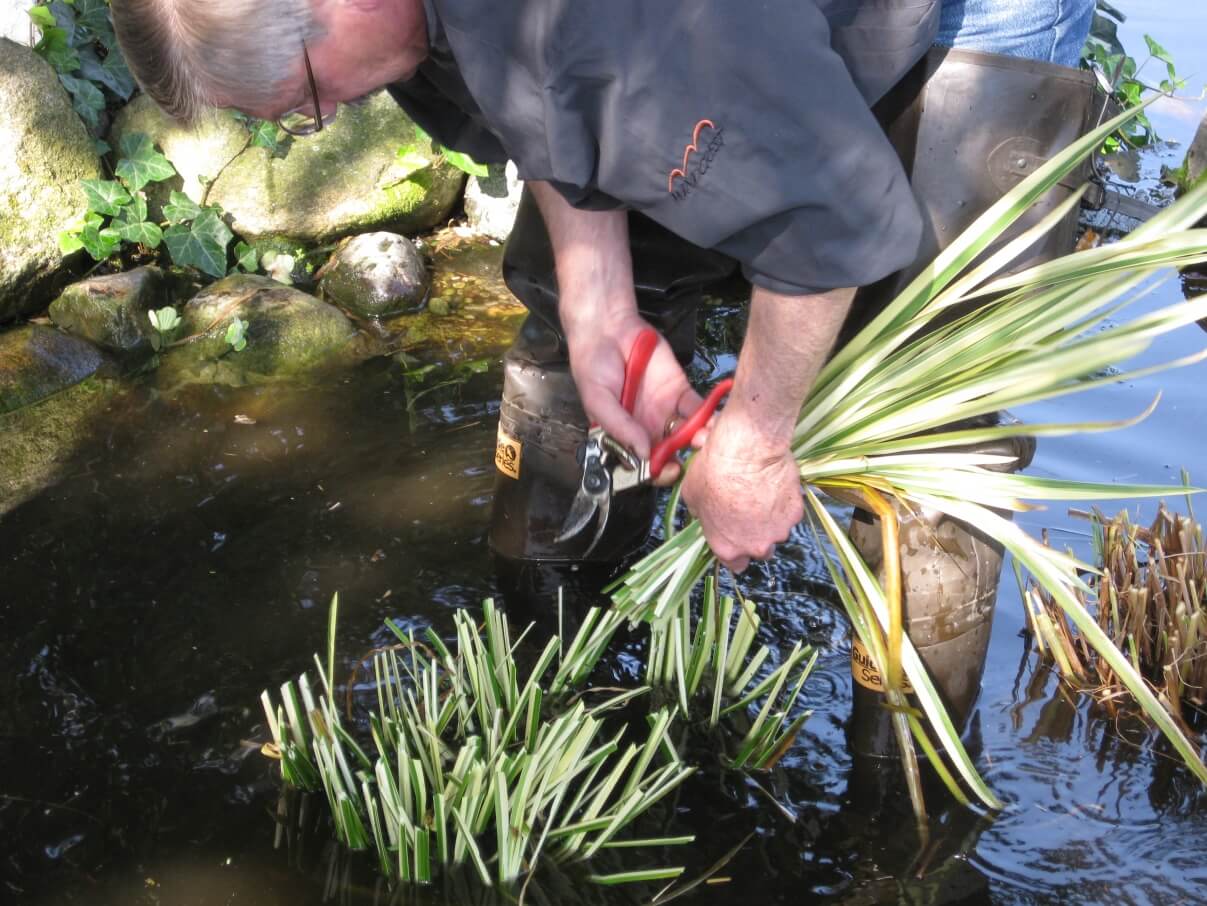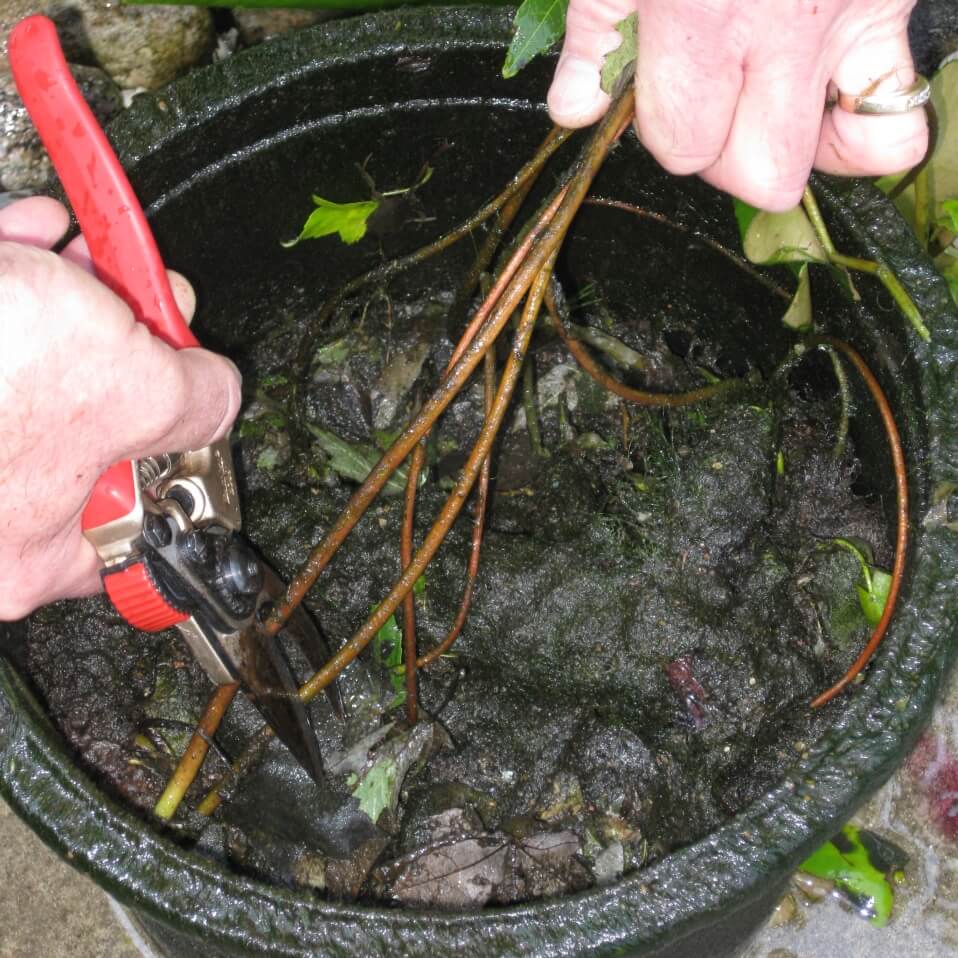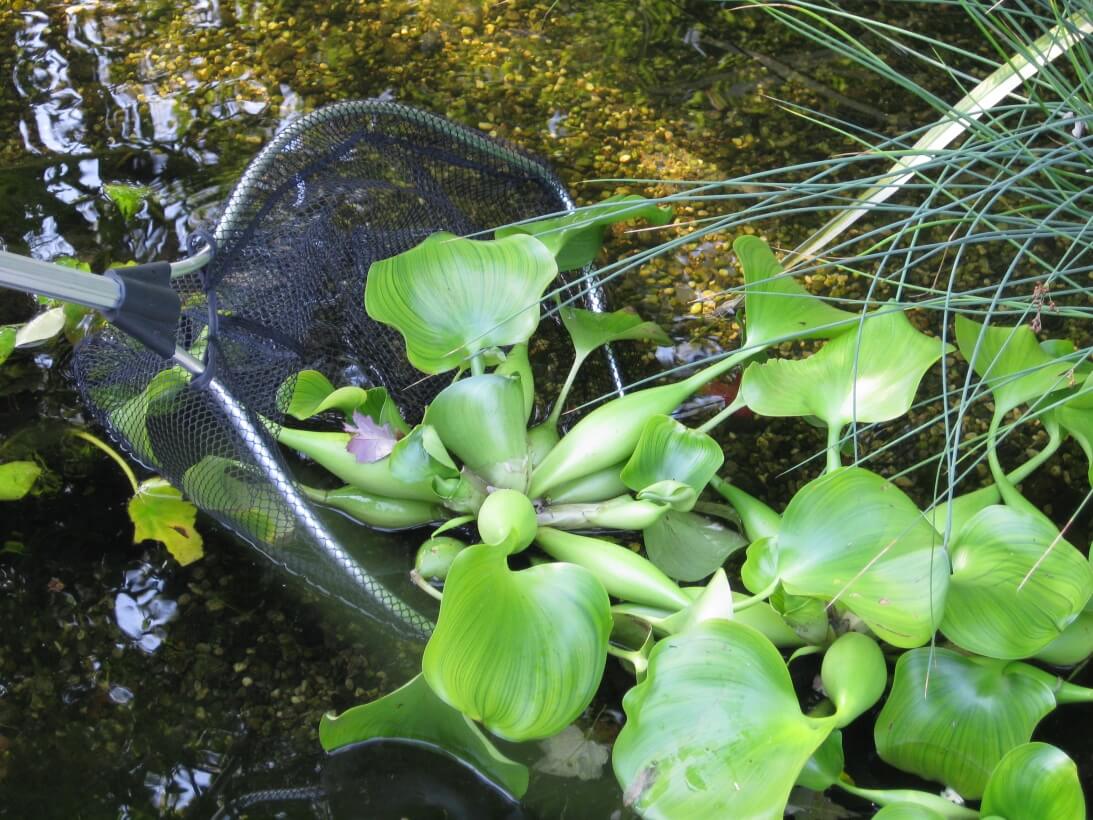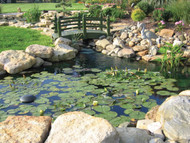How to Keep Pond Plants Safe Until Spring
Nov 1st 2019
“How do we maintain our aquatic plants for the winter?” This is a common question we receive every Fall. To ensure beautiful plants next spring and summer, all pond hobbyist should follow a few steps now before the weather turns too cold and blistery.
Hardy Pond Plants
Hardy marginal plants can easily be winterized by first removing dead foliage down to the crown of the plant. Next, trim back any foliage that is not dead to a height just above the water level. This procedure can be followed for most hardy marginal plants such as rushes, reeds, cattails and iris.
Marginal Pond Plants
Some hardy marginal plants should be wintered at the bottom of the pond or in two feet or more of water. For water gardeners who live in Zone 5 or below, these plants include thalia, pickerel, lobelia, melon sword and water parsley. Do not allow the tuber or rhizome of these plants to be subjected to actual freezing of the water or to be covered in ice. This will cause the plants to turn to mush and they will not return in the spring.
If your pond is too shallow to overwinter your plants, you can place the plants in a styrofoam cooler. They may be stored in the garage or crawl space at 40°F, but they must be kept cool, dark and damp by covering them and watering them once or twice a month.

Hardy Water Lilies
We recommend our customers trim the long foliage of hardy water lilies down to the crown. You should leave growth near the crown in place for next year’s food source.
When the weather turns cool and the first frost hits the pond, place the pot at the bottom of the pond or at a depth of 18 inches or more of water. If your pond is above ground, you can winter your hardy water lilies indoors. Simply place them in pots in a cooler and keep them moist, cool and dark. If you prefer to winter your hardy water plants in your above ground pond, simply install a pond heater.

Oxygenating Water Plants
Oxygenating water plants that are hardy to at least Zone 5, such as coontail and Italian veil, should be trimmed to three to four inches and left in the bottom of the pond. These plants provide valuable oxygen to the pond when the pond water is warm, thus helping to keep your water clear. They will winter over at the bottom of your pond, or at 18 inches of water or deeper with no extra care needed.
Tropical Floating Plants
Floating tropical plants such as water lettuce and hyacinth should be treated as annuals in your water garden. To overwinter them in the northern climates, the water must be at least 70°F with 12 hours minimum of sunlight daily. You would need an aquarium, a heater and a strong grow light. Even then, they typically make it to February at best before turning to mush. The cost involved is far more than purchasing new plants in the spring.

Tropical Plants
Tropical, bog and marginal plants can be enjoyed year around. They must be brought inside before the first frost. Trim all dead and leggy foliage. It is acceptable to keep your tropical marginal plants submerged in a container that holds water, but your tropical plants can easily flourish when treated as houseplants. Be sure to water them once or twice a week and keep them in a warm sunny place. There is no need to fertilize your tropical plants because they will not grow much in the winter.
Tropical Water Lilies
Tropical water lilies are loved by the pond hobbyist for their unique foliage and their exquisite flowers and fragrance. Many pond owners are drawn to tropical water lilies but are hesitant to grow them, assuming they are too difficult to overwinter. There are two options (assuming you do not have a heated greenhouse) to winterize your tropical lily.
Option 1
After the first frost remove the tuber from the soil, trim all leaves from it and let it dry. Lightly spray with a fungicide and again let it dry. Next, bury the tuber in a sealed jar with damp sand and store it in a dark, cool area where it cannot freeze.
Option 2
Treat the tropical water lily as an annual and replace it each year.
We hope these guidelines for winterizing your aquatic plants have put your fears to rest as you prepare your pond for its winter slumber.

